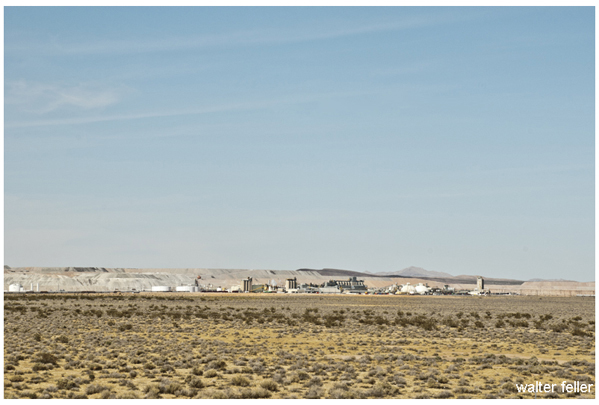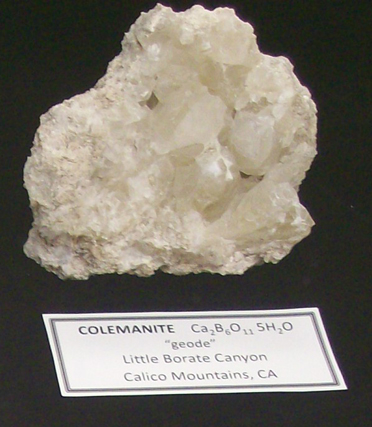Kramer District

This district, located some 30 miles east of Mojave, contains the most important source of borax and borate related products the world has ever known. It's discovery led to the closure of every other major borax mine on the West Coast. Together with the Searles Lake deposits, the Kramer District supplies the world with 95 percent of it's boron compounds. This amazing deposit is 1 1/2 miles long, half a mile wide, 200 feet thick, and outcrops nowhere. It was discovered by someone looking for water!
Dr. J. K. Suckow was drilling a well for water 4 1/2 miles northwest of Boron when he discovered colemanite, a borax ore, in October, 1913. After his discovery, mining claims, mostly placer, were located in the area. The Pacific Coast Borax Company, upon recommendation of its field engineer, Clarence Rasor, acquired many of these claims, including the discovery well. The company then started explorations to determine the extent of the orebody. Suckow continued to have an interest in the area, working prospects east of his discovery well.
In 1924, anxious to repeat his good fortune, Suckow sunk a shaft one-half mile away from his first, and he struck basalt at 180 feet . The Pacific Coast Borax Company did their own prospecting in the same area, with almost the same results: basalt at 190 feet. However, persistence paid off. That same year Suckow sunk another shaft just a little south of his last one and found a 70 foot thick bed of colemanite at 210 feet. In 1925 the Suckow Chemical Company produced a few hundred tons of colemanite from this shaft. 64
In the Spring of 1925, William M. Dowsing and J. L. Hannan discovered a huge deposit 120 feet thick just 1 1/2 miles west of Suckow's shaft, which they kept a secret until its extent was proven. Sold to the Pacific Coast Borax Company in early 1926, it became known as the Baker Mine. Beginning production in 1927, it yielded a substantial percentage of the borates produced in the Kramer District until 1935.65
Production began in December, 1929, at the Suckow Mine, located near the Baker Mine. Suckow Borax Mines Consolidated, Ltd. shared half-interest as tenant in common of the Suckow Mine with Borax Consolidated, Ltd. The two companies became involved in litigation which resulted in the closure of the mine in 1932. It was reopened in 1935 as the West Baker Mine with the Borax Consolidated, Ltd. as owners.
The Western Mine, southwest of the Baker Mine, was found in July, 1927, by W. M. Baling who transferred ownership to the Western Borax Company. He remained on as the mine superintendent. Between 1927 and 1933, the Western produced about 160,000 tons of ore before being sold to the Borax Consolidated, Ltd. in mid-1933. These underground borax mines became obsolete when the large open-pit Boron Mine was formally opened in November 1957. The deposit is expected to last several generations. 66
Borax
20 Mule Team Road
John Searles
Borax Smith

Colemanite